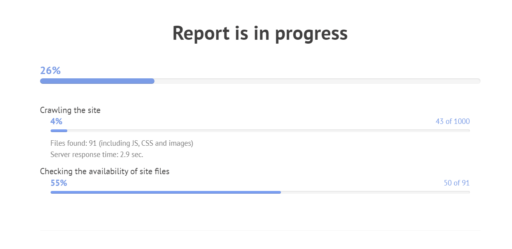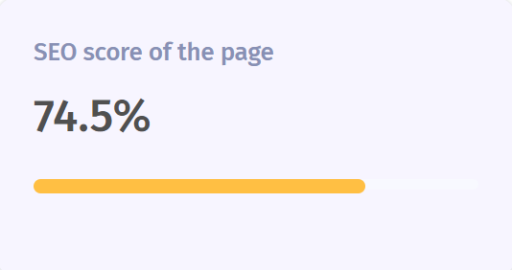Search Engine Optimization (SEO) is optimizing websites to rank higher in Search Engine Results Pages (also known as “SERPs” or “SERP”) for relevant keywords. Its importance stems from the fact that most online experiences begin with a search query. By appearing prominently for these queries, businesses can attract more targeted website traffic, increasing brand awareness, leads, and revenue. My name is Casey Keith, and I have a few points about SEO.
Search Engine Optimization Definitions and Importance:
| Entity | Attribute | Value |
|---|---|---|
| SEO | Definition | Attracts targeted traffic, increases brand awareness, leads, and revenue |
| SEO | Importance | Attracts targeted traffic, increases brand awareness, leads, revenue |
| Search Query | Type | Beginning of most online experiences |
On-Page Search Engine Optimization
Keyword research lays the foundation by identifying relevant search terms customers use and optimizing for them. Title tags and meta descriptions serve as enticing “ad copy” in search results. Body content should be enriched with target keywords in a natural, readable manner using semantic markup like headings. Images with descriptive alt text and filenames aid accessibility. A clean URL structure and strategic internal linking provide a seamless user experience. Entity SEO and entity usage need to be considered, too.
On-Page Optimization Factors:
| Entity | Attribute | Value |
|---|---|---|
| Keyword Research | Purpose | Keyword research is finding and analyzing what relevant audiences search for in search engines like Google. |
| Title Tag | Function | An HTML code tag allows you to give a web page a title. This title can be found in the browser title bar and in the search engine results pages (SERP). Adding and optimizing your website’s title tags is crucial, as they play an essential role in organic ranking (SEO). |
| Meta Description | Function | Informs and interests users with a short, relevant summary of a particular page’s content. It is like a pitch that convinces the user that the page is exactly what they’re looking for. |
| Body Content | Technique | Body text or body copy is the text forming the main content of a web page. |
| Images | Attributes | Descriptive alt text, filenames for accessibility |
| URL Structure | Quality | Clean and optimized |
| Internal Linking | Benefit | Provides seamless user experience |
Off-Page Search Engine Optimization Signals
While on-page factors control what’s on your website, off-page SEO influences how search engines perceive the content’s quality and relevance. Link building—acquiring reputable inbound links—is crucial. Local citations on directories boost local pack visibility. Social media mentions, and online discussions of brands create positive signals. I promote the use of unpaid solutions for off-page SEO. I recommend using Google Business Profile (formerly Google My Business), Yelp, LinkedIn, and Apple Maps.
Off-Page Optimization Signals:
| Entity | Attribute | Value |
|---|---|---|
| Link Building | Definition | Link building is an SEO tactic that involves getting other websites to link to your website. |
| Link Type | Categories | Dofollow, nofollow |
| Link Quality | Importance | Any mention of a business on the web, such as its name, phone number, address, zip code, or website address. Local citations are essential for local SEO because they help search engines verify a business’s existence and legitimacy. |
| Local Citations | Purpose | Link building is an SEO tactic that involves linking other websites to your website. |
| Social Signals | Examples | Any mention of a business on the web, such as its name, phone number, address, zip code, or website address. Local citations are essential for local SEO because they help search engines verify a business’s existence and legitimacy. |
Technical Search Engine Optimization

An SEO-friendly website architecture with an XML sitemap ensures all content is crawlable and indexable. Robot.txt files provide crawl directives. Schema markup helps search engines better understand page content. HTTPS encrypts data for security. The mobile-friendly design caters to today’s browser habits. Page speed optimizations reduce bounce rates. I suggest using affordable options like Labrika for TechnicalSEO. Labrika has become my go-to tool since I stopped using CORA.
Technical SEO Factors:
| Entity | Attribute | Value |
|---|---|---|
| Site Architecture | Requirement | Hierarchical structure of your website pages. SEO-friendly for crawling |
| XML Sitemap | Purpose | A file that lists a website’s essential pages, making sure Google can find and crawl them all. |
| Robot.txt | Function | Used to manage crawler traffic. |
| Schema Markup | Benefit | Structured data that communicates the meaning of your page, its elements, and how users should see it and in a language the search engine can understand. |
| HTTPS | Importance | Hypertext transfer protocol secure (HTTPS) is the secure version of HTTP, the primary protocol used to send data between a web browser and a website. |
| Mobile-Friendly | Necessity | Mobile–friendly sites show up higher in search results; Mobile searches make up more than half of searches on Google.com. |
| Page Speed | Impact | Page speed measures how fast the content on your page loads. Google announced that page speed will be a ranking factor in their mobile-first plan. Optimizing First Contentful Paint (FCP) and DOMContentLoaded (DCL). |
Search Engine Optimization Audits

SEO audits analyze a website’s optimization levels across numerous factors, such as indexing health, on-page elements, site structure, page speed, backlink profile, and local/voice search presence. They also benchmark performance against competitors to identify gaps and areas for improvement. For my On-Page audits, I use TextFocus. I also use WordLift SEO Tool for Google Sheets for entity checks and entity gap analyses.
SEO Audit Factors:
| Entity | Attribute | Value |
|---|---|---|
| SEO Audit | Purpose | Identify over 140 common issues based on priority and importance and determine how to fix them. |
| Analysis Areas | Examples | SEO analysis, including keyword research, entity usage, on-page factors, and off-page tools. Indexing, on-page, structure, speed, backlinks, local/voice |
| Competitor Analysis | Goal | Researching your competitors to gather insights about their keyword, content, and backlink strategy and using those insights to improve your SEO |
A Measurable, Data-Driven Search Engine Optimization Strategy
Effective SEO campaigns start by defining tangible goals like increasing organic traffic by X% or achieving top 3 rankings for Y keywords. Key performance indicators (KPIs) are established to track progress towards those goals. A content strategy based on search data guides ongoing optimization and promotion efforts. Results are continually measured and used to refine the approach over time.
SEO Strategy Elements:
| Entity | Attribute | Value |
|---|---|---|
| Campaign Goals | Examples | A good SEO goal should be specific, measurable, actionable, relevant, and time-bound (SMART). |
| KPIs | Purpose | SEO KPIs (key performance indicators) are metrics used to measure the effectiveness of your SEO efforts. Some common SEO KPIs include organic visibility, keyword rankings, organic click-through rate (CTR), and conversions. |
| Content Strategy | Foundation | Find topics with search traffic potential. The goal of creating SEO content is to rank high on Google. |
| Result Measurement | Importance | The number of conversions (for a single desired action/goal) divided by the number of unique visits. |
The Future of Search Engine Optimization (SEO)
SEO professionals must adapt their strategies as search engines evolve with AI/machine learning technologies for enhanced semantics processing, voice queries, and mobile-first indexing priorities. However, the core focus remains on creating an outstanding user experience for humans and search engine crawlers/algorithms.
Future SEO Trends:
| Entity | Attribute | Value |
|---|---|---|
| AI/Machine Learning | Impact Area | Enhanced semantic processing. Machine learning (ML) is a field of study in artificial intelligence that is concerned with developing and studying statistical algorithms. |
| Voice Search | Emerging Area | Enhanced semantic processing. Machine learning (ML) is a field of study in artificial intelligence that involves developing and studying statistical algorithms. |
| Mobile-First Indexing | Shift | Google’s web crawler prioritizes indexing the mobile version of a website’s content over its desktop counterpart. |
| Outstanding User Experience | Requirement | Simplicity is key to a great user experience. Strive for clean and intuitive designs that make it easy for users to accomplish their goals. Avoid cluttered interfaces and excessive features that can overwhelm users. |
SEO is an integral digital marketing service for businesses seeking more qualified website traffic and brand visibility in today’s online landscape. With a strategic, data-driven approach that harmonizes on-page, off-page, and technical best practices, SEO can be a powerful driver of sustainable growth. I teach these concepts and more in my Treasure Map course. I hope you enjoyed my YouTube video about using TextFocus to optimize content is included.
